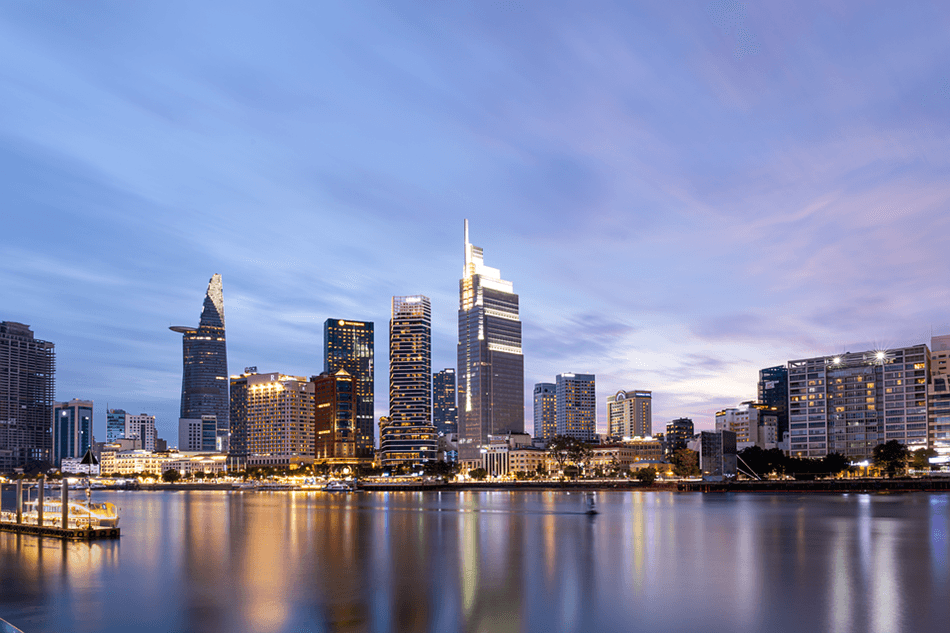Ask GRAI Anything
Your Real Estate Questions, Answered Instantly via Chat


Help us make GRAI even better by sharing your feature requests.

For most of the 2010s, global property investors lived by one rule: the safest returns came from the West. That rule just broke.
In 2025, the world’s biggest funds, family offices, and high-net-worth investors are shifting billions toward Asia and the Middle East, chasing something that’s become almost extinct in the U.S. and Europe - real yield.
This is not a temporary arbitrage play. It’s the start of a structural capital migration that could reshape global real estate over the next decade.
Central banks in the U.S., UK, and Eurozone began cutting rates in mid-2025, easing the monetary strain but crushing income returns.
Compare that with rental yields in global property markets:
| Market | Prime Rental Yield (2025) |
|---|---|
| Dubai Residential | 6% - 7% |
| Singapore Office | 5.1% |
| Vietnam Industrial | 3% - 7% |
| India REIT Portfolio Avg. | 8% - 9% |
| U.S. Multifamily | 4.9% - 6.2% |
| UK BTR | 2% |
The spread is unmistakable: Western assets deliver stability; Eastern assets deliver returns. As monetary easing narrows yields further in advanced economies, institutional and private capital are rotating eastward to rebalance portfolios.
Also Read: If Immigrants Leave, Housing Will Crash - But So Will the Economy
1. Debt Overhang:
Nearly $1.8 trillion in the U.S. CRE loans mature by 2026. Refinancing risk is compressing margins.
2. Stagnant Growth:
Eurozone GDP growth < 1 %, U.S. growth ~ 1.7 %.
3. Inflation Aftershock:
Even after rate cuts, structural inflation keeps real yields near zero.
4. Regulatory and Tax Fatigue:
Tightening ESG disclosure, rent caps, and foreign ownership limits weigh on returns in Europe and Canada.
Simply put, the risk-adjusted yield calculus no longer favors developed markets.
Must Known: Depreciation Recapture Tax: A Hidden Cost in Real Estate
Dubai: The Global Capital Magnet
Total property transactions up 32% YoY.
Gross residential yields average 6.8%, with pockets > 8% in mid-tier areas.
Zero income tax and strong FX stability against the USD.
Top buyer segments: India, UK, and European expats rebalancing portfolios post-rate cuts.
It has emerged as the most liquid and tax-efficient hub for global real estate yields in Dubai

Singapore: The Sovereign Safety Play
Rental growth +4% YoY, supported by supply constraints.
Institutional inflows from Japan, Korea, and family offices seeking stability.
Prime office yields at 3% - 3.5%, logistics near 5.25% - 6.25%, and cap appreciation steady. Singapore isn’t high-yield - it’s high-trust. And that’s equally valuable.

India: The REIT Revolution
Office absorption up 11% YoY.
4 listed REITs now control over 150 million sq ft of Grade-A space.
Distributed yields average 8% - 9%, among the highest globally.
Industrial/logistics and data-center pipelines expanding at double digits. India’s institutionalization of real estate makes it the most scalable “growth + yield” story in Asia.

Vietnam: The Frontier Factory Play
Logistics yields 7% - 8%, industrial demand + 15% YoY.
Beneficiary of “China + 1” manufacturing diversification.
Currency volatility remains a risk, but foreign capital continues to rise.
Vietnam is becoming Southeast Asia’s equivalent of Shenzhen circa 2005 - small today, dominant tomorrow.

Saudi Arabia: The Vision 2030 Catalyst
Construction spend $1.3 trillion pipeline.
Riyadh and NEOM leading new city developments.
Institutional capital entering early, expecting long-term appreciation.
MENA’s biggest economy is now a generational real estate build-out in motion.

Capital behaves like water - it flows where the pressure is lowest. Today, the pressure points are in developed markets; the altitude is in the emerging world.
Family offices and pension funds are also looking to reweigh their global allocations with some considering an optimal allocation for long time investors being in the 30% - 50% toward Asia-focused strategies.
This isn’t a cyclical rotation. It’s capital gravity resetting.
1. Higher Yields = Higher Volatility : Frontier markets offer returns but require FX and policy risk modeling.
2. Institutional Entry Points Are Narrowing : Early adopters are already locking in 2024-25 vintages; laggards may face compressed yields by 2027.
3. Diversification Advantage : Even a small allocation to MENA/Asia yield hubs improves portfolio diversification upwards.
4 Next Step : Watch for yield convergence by 2028 as global capital equalizes returns.
GRAI enables investors to simulate cross-market yield differentials and capital flows in real time:
“Compare real estate yields across U.S., MENA, and Asia through 2030.”
“Forecast cross-border capital flows under varying rate regimes.”
“Simulate portfolio IRRs as Asian yields compress over time.”
“Model REIT and fund performance under multi-region exposure.”
Find Your Next High - Yield Market with GRAI : https://internationalreal.estate/chat
The West built the frameworks for global real estate investing. But the East is now building the returns.
For global investors, this isn’t about speculation - it’s about recognizing a once-in-a-decade geographic rebalancing of yield, growth, and capital gravity.
The next era of real estate wealth will be minted not in New York or London - but in Dubai, Singapore, and Mumbai.